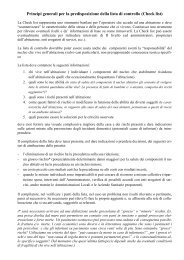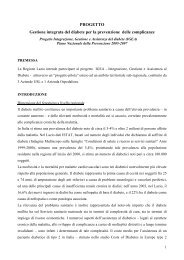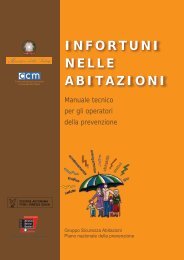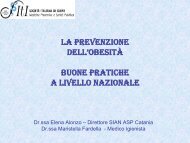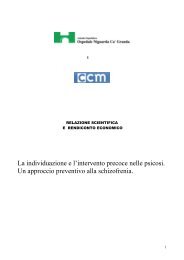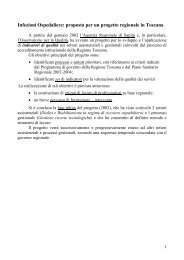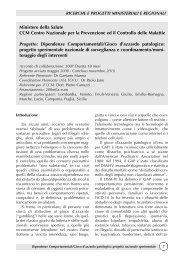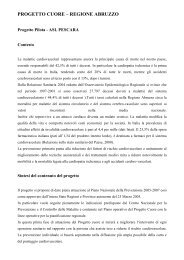Gaining health : analysis of policy development in European ...
Gaining health : analysis of policy development in European ...
Gaining health : analysis of policy development in European ...
You also want an ePaper? Increase the reach of your titles
YUMPU automatically turns print PDFs into web optimized ePapers that Google loves.
Chapter 4<br />
26<br />
Albania<br />
Péter Makara & Zsófia Németh<br />
1. Country pr<strong>of</strong>ile<br />
Albania is located <strong>in</strong> south-eastern Europe. It is bordered<br />
by Greece, Montenegro, Serbia and the former Yugoslav<br />
Republic <strong>of</strong> Macedonia. Unlike most <strong>of</strong> the <strong>in</strong>habitants <strong>of</strong><br />
neighbour<strong>in</strong>g countries, Albanians are ma<strong>in</strong>ly Muslims and<br />
the <strong>of</strong>ficial language, Albanian, belongs to the Lat<strong>in</strong> family <strong>of</strong><br />
languages.<br />
Albania has an area <strong>of</strong> 28 750 km 2 and a population <strong>of</strong> 3.1<br />
million. More than half <strong>of</strong> the population live <strong>in</strong> rural areas.<br />
Around a third <strong>of</strong> the <strong>in</strong>habitants are under the age <strong>of</strong><br />
15 and 40% are under 18. The population grew by 1.2%<br />
per year <strong>in</strong> the period 1980–1999, and the fertility rate <strong>in</strong><br />
1999 was 2.4 children per woman <strong>of</strong> childbear<strong>in</strong>g age. The<br />
fact that, accord<strong>in</strong>g to the latest census, the population <strong>of</strong><br />
Albania fell slightly <strong>in</strong> the period 1989–2001 can only be<br />
expla<strong>in</strong>ed by extensive emigration.<br />
Albania is divided <strong>in</strong>to twelve adm<strong>in</strong>istrative areas known as<br />
prefectures, which are subdivided <strong>in</strong>to several districts.<br />
1.1. Socioeconomic <strong>development</strong><br />
Together with the Republic <strong>of</strong> Moldova, Albania is one <strong>of</strong><br />
the poorest countries <strong>in</strong> Europe. It enjoys impressive economic<br />
growth but the proportion <strong>of</strong> the population liv<strong>in</strong>g<br />
<strong>in</strong> poverty, the unemployment rate and school enrolment<br />
are nevertheless among the worst <strong>in</strong> Europe. Follow<strong>in</strong>g<br />
severe economic and social crises and emergencies <strong>in</strong> the<br />
1990s and substantial emigration to neighbour<strong>in</strong>g countries,<br />
the political and economic situation stabilized somewhat.<br />
The rate <strong>of</strong> unemployment fell from 10% to about 7% <strong>in</strong><br />
2005 and the proportion <strong>of</strong> those liv<strong>in</strong>g <strong>in</strong> poverty fell from<br />
25.4% <strong>in</strong> 2002 to 18.5% <strong>in</strong> 2005. Despite the great strides<br />
tak<strong>in</strong>g place <strong>in</strong> <strong>development</strong>, the rural population is generally<br />
still very poor, electrical supplies are <strong>in</strong>sufficient and,<br />
ow<strong>in</strong>g to regular power cuts, water supplies to households<br />
suffer shortages. Nevertheless, government action has<br />
resulted <strong>in</strong> a massive reduction <strong>in</strong> poverty, especially s<strong>in</strong>ce<br />
2002. This has been accompanied by significant regional<br />
convergence, and poverty rates across broadly def<strong>in</strong>ed regions<br />
have narrowed substantially. The G<strong>in</strong>i <strong>in</strong>dex had risen<br />
to 30% by 2006, <strong>in</strong>dicat<strong>in</strong>g an <strong>in</strong>equality level <strong>in</strong> the distribution<br />
<strong>of</strong> <strong>in</strong>come similar to other <strong>European</strong> countries (1).<br />
1.2. The people and their <strong>health</strong><br />
Albania’s <strong>health</strong> outcomes lag beh<strong>in</strong>d those <strong>of</strong> other countries<br />
<strong>in</strong> the WHO <strong>European</strong> Region. Life expectancy for<br />
Albanians is lower than the <strong>European</strong> average, while <strong>in</strong>fant<br />
and maternal mortality rates (particularly <strong>in</strong> rural areas)<br />
rema<strong>in</strong> higher than the <strong>European</strong> average.<br />
Poor liv<strong>in</strong>g conditions, <strong>in</strong>clud<strong>in</strong>g overcrowd<strong>in</strong>g, polluted<br />
environments and poor nutrition, result <strong>in</strong> low <strong>health</strong> status,<br />
to which the <strong>health</strong> care services are unable to respond<br />
effectively. Tuberculosis, eradicated dur<strong>in</strong>g the communist<br />
era, has reappeared as a result <strong>of</strong> poverty and overcrowd<strong>in</strong>g<br />
<strong>in</strong> major cities. Albania is fac<strong>in</strong>g an <strong>in</strong>creas<strong>in</strong>g <strong>in</strong>cidence<br />
<strong>of</strong> NCD as the population ages. The greatest burden <strong>of</strong><br />
disease for men comprises the effects <strong>of</strong> tobacco and<br />
alcohol use and high blood pressure, while that for women<br />
comprises high blood pressure and obesity (2).<br />
1.3. The ma<strong>in</strong> features <strong>of</strong> the <strong>health</strong> system<br />
A basic PHC system was established prior to 1990 but <strong>in</strong><br />
1991 and 1992, and aga<strong>in</strong> <strong>in</strong> 1997, many PHC facilities were<br />
closed. Accord<strong>in</strong>g to the Statistics Unit <strong>of</strong> the M<strong>in</strong>istry <strong>of</strong><br />
Health, the number <strong>of</strong> <strong>health</strong> centres fell from 702 <strong>in</strong> 1994<br />
to 564 <strong>in</strong> 2000, while the number <strong>of</strong> <strong>health</strong> posts decreased<br />
from 1973 to 1582 dur<strong>in</strong>g the same period.<br />
In rural areas, a typical <strong>health</strong> centre is staffed by up to<br />
three PHC doctors plus some nurs<strong>in</strong>g staff. Most <strong>of</strong> the<br />
Case studies: <strong>policy</strong> <strong>development</strong> <strong>in</strong> countries for tackl<strong>in</strong>g noncommunicable diseases



